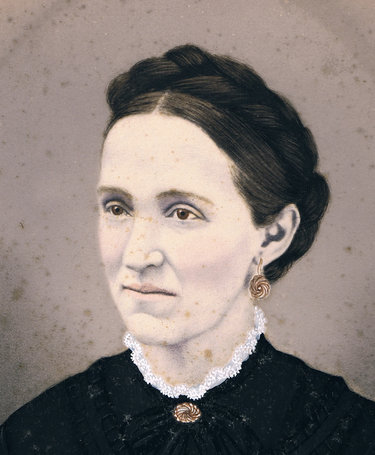Solving the mystery of Great grandma's demise
“There are more things in heaven and earth, Horatio,
Than are dreamt of in your philosophy.”
— William Shakespeare, in Hamlet
We are not born as skeptics; it is something we are taught. Society generally takes it upon itself to disabuse young souls of their gullible naiveté at a relatively early age.
Following the traumatic disclosures regarding Santa Claus and the Easter Bunny, parents and schools do their best to expunge any remnant of belief in ghosts and spirits, or anything that cannot be explained by scientific method and rational thought.
The secular humanists have worked overtime to marginalize and denigrate even the ineffability of the religious experience, failing as they always do to recognize that science may describe “how” but will never answer the question “why.”
I find, however, that the older I grow and the more that I learn, the more my well-programmed skepticism has become insufficient to explain the occurrence of certain events in the human experience.
Recent events of an unrelated nature caused me to recall a particular day in 2008 that raised my hackles and disclosed to me the possibility that the evidence of our five senses is arguably incomplete in describing in toto the world around us.
My great-grandmother, Lydia Truax Crounse, met her untimely death in 1908, a mere four months after the death of her husband, John Peter Crounse. The circumstances of her death were both tragic and out of the ordinary.
I sat down at the computer that September day, somewhat in a surfing mood, and for no discernable reason other than the random wanderings of my mind, I decided to check on the precise date of her death.
She and Great-Grandpa John’s photo portraitures had hung on the stairway wall for many years, above my Grandma and Grandpa. My father had placed small index cards in the lower corner of each photo, indicating the birth and death dates. With my Great-Grandma, no date of death other than “1908” was posted.
I delved into the online archives of The Enterprise for the year 1908 until I found the following: “Last Saturday afternoon while Mrs. John P. Crounse was going from her home to visit her son, Peter Crounse, near Meadowdale, she was run down and instantly killed by fast train No. 7 bound east. It appears that Mrs. Crounse was accustomed to go quite frequently on these visits, but would follow an old wood road leading past the Crounses’ saw mill, and so on to the Gardner farm, where her son lived. Once she was known to have come home by way of the track. Being hard of hearing accounts in part for her death, as the engineer gave repeated signals for her to step off the track. When she did understand the warning it came too late.”
I still didn’t have a precise date, and the scanned copy of the page in The Enterprise didn’t indicate one. One column over from the obituary, I discovered the following notice: “The “D.&H." railroad announce an excursion to Niagara Falls, today, Friday, Oct. 3d. from Oneonta and intermediate stations to Albany at greatly reduced rates.”
Now I was on to something. The obituary mentioned “last Saturday afternoon.” It was easy enough to count the days back to arrive at the date of death: Sept. 27, 1908.
Then it struck me. My eyes focused on the computer date on the lower right corner of my screen. It was the afternoon of Sept. 27, 2008!
It is difficult to describe the eeriness of the experience. Some will call this sheer coincidence, but my intuition told me that this had to be more than just a random event. I don’t know for sure, but I would guess that the room in which I sat was the same room in which her body had lain in state.
The pictures of John P. and Lydia Truax Crounse had been removed from the stairway wall some years earlier. I turned around in my chair and discovered her photograph facing me from its place on the floor. Another “twinge.”
Was there a message for me that day? Had she chosen her great-grandson to impress him with an experience that would guarantee her lasting memory? Why had she asserted herself on the centennial of her death, and conjecturally at the same hour of her tragic demise?
I’ll never know the answers during this life, but when the Grim Reaper decides that my time is up, and I enter the eternity beyond, I’ll make it a point of asking her.
Editor’s note: Frederick R. Crounse is a direct descendent of Frederick Krownsky, an original European settler of what is now Altamont, and is named after him. Retired from the Air Force and serving NATO for 14 years as a civilian, Crounse lives in a house on Brandle Road, built in 1829, that has been in his family since 1841; he says he feels his great-grandmother’s presence there.

